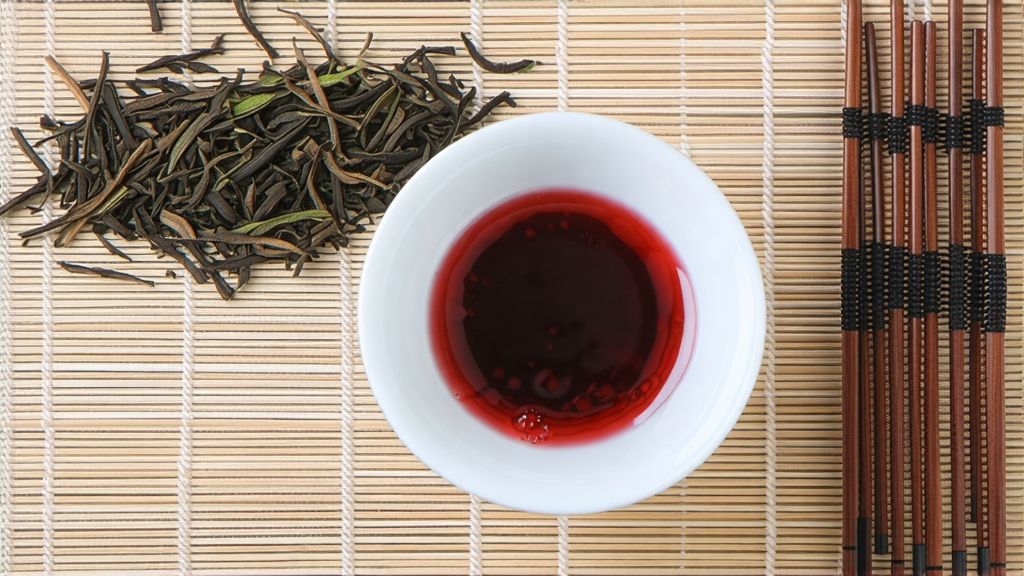
Long before English merchants coined the term “black tea,” Chinese mountain folk in the Wuyi massif of northern Fujian were already coaxing the first fully oxidized leaves from local tea bushes. The year most often cited is 1646, when Qing soldiers disrupted the usual green-tea drying schedule; villagers, desperate to save their harvest, rushed the leaves over open pinewood fires. The accidental smoke infusion not only preserved the tea but also created a flavor so arresting that Dutch and British traders later paid triple the price of ordinary green teas. Thus was born Lapsang Souchong—today celebrated as the world’s oldest black tea and the progenitor of every smoky Keemun, malty Assam, and brisk Ceylon that followed.
Geography is the first character in the story. The Wuyi Mountains rise like a fortress of granite and basalt above the Min River, their cliffs streaked with mineral runoff that flavors the mist. Day-night temperature swings of 15 °C slow the growth of the small-leaf cultivar xiao zhong, concentrating sugars and volatile aromatics. At 600–1 200 m elevation, the bushes root directly into weathered rock fissures, absorbing the same pine and camphor fragrances that later drift into the tea itself. Locals insist that only leaves plucked within the 60 km² core reserve—known as “zheng shan,” or true mountain—can legally claim the name Lapsang Souchong. Everything else is simply smoked black tea.
The cultivar matters as much as the cliff. Traditional xiao zhong plants bear leaves barely 4 cm long, olive-green, and so delicate that a kilogram of finished tea requires 55 000 buds. In late April, pickers climb bamboo scaffolds to pluck the standard “two leaves and a bud,” but the top grade, called “ji pin,” demands only the unopened bud itself, picked before the morning dew evaporates. Such selectivity yields a tea that is paradoxically both subtle and intense: honeyed peach on the nose, yet a campfire finish that lingers like single-malt whisky.
Processing begins within minutes of plucking. The leaves are first withered across second-floor bamboo racks suspended above the ground-floor smoking pit. A gentle fire of local Masson pine is kept at 28–30 °C for 8–10 hours, softening cell walls while impregnating the leaf with resinous terpenes. Oxidation follows in cloth-lined wooden trays; every 30 minutes the tea master rolls the leaves by hand, monitoring the copper color that signals 90 % enzymatic conversion. The critical step—unique to Lapsang Souchong—is the final hot-smoke drying: the semi-oxidized leaves are spread on sieves 1.5 m above a pinewood blaze that has burned down to embers. Sawdust and fresh pine bark are tossed on, sending aromatic smoke through a brick chimney for 3–5 minutes at 80 °C. This flash fixes both moisture (below 7 %) and the signature phenolic bouquet. A minority of producers now offer an “unsmoked” version, dried with charcoal and warm air, but connoisseurs revere the classic pine wreath as the soul of the tea.
Grading is refreshingly straightforward. “WP1” (Wuyi Premium 1) comprises only buds, jet-black with golden tips, producing a bright crimson liquor and a clean, resin-sweet cup. “WP2” mixes bud and first leaf, yielding a deeper amber and a more pronounced smoky bite. “WP3,” the workhorse grade, includes second leaves; its liquor is russet, its aroma reminiscent of smoked plums and burnt toffee. Regardless of grade, all authentic Lapsang Souchong shares a tell-tale glossy surface—tar deposited by the pine vapors—and a light, almost fluffy leaf that crackles when crushed.
To brew the tea gongfu style, start with a 120 ml porcelain gaiwan or a thin-walled Yixing zi-sha pot that has been seasoned only with black teas. Use 5 g of leaf—roughly two heaping teaspoons—for a 1:24 leaf-to-water ratio. Bring soft, neutral water to 95 °C; anything harder accentuates tannic edges. Rinse the leaves for three seconds, discarding the wash to remove